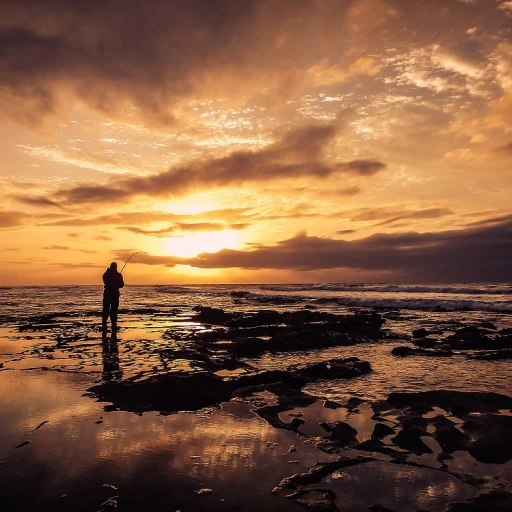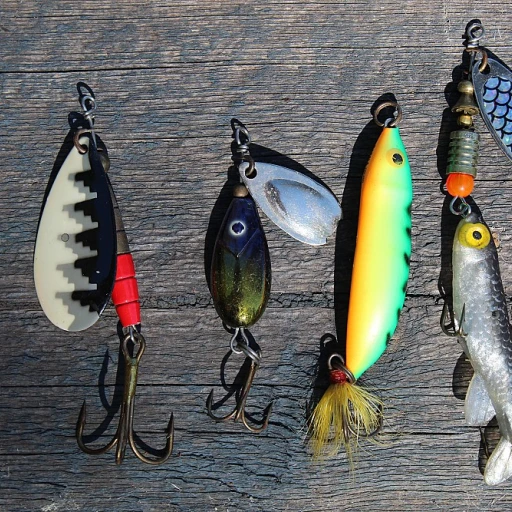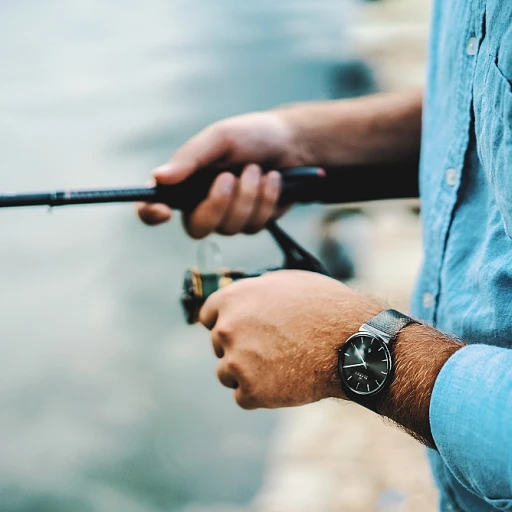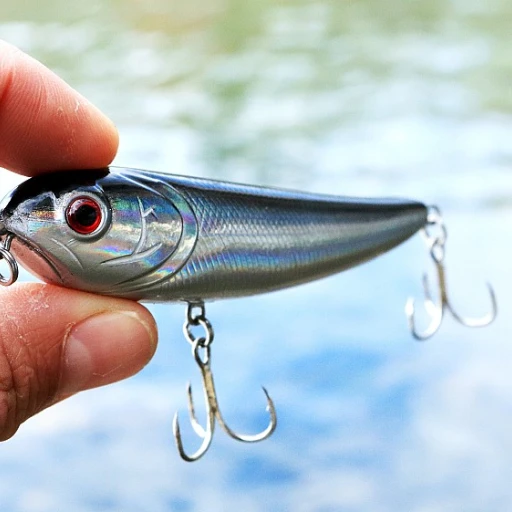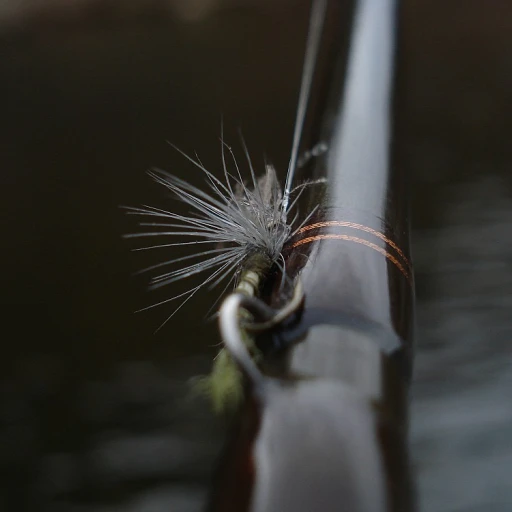
Understanding the Plight of Our Finned Friends: The Current State of Endangered Fish Species
Grasping the Critical Situation: Knowing the Stats Behind Endangered Aquatic Life
Anglers must realize that the recreational fishing they cherish is intrinsically connected to the well-being of our aquatic ecosystems. According to the International Union for Conservation of Nature (IUCN), a startling over 30% of the world's freshwater fish species are threatened with extinction. This statistic illustrates the dire circumstances faced by our finned friends. By delving into the details of species such as the Atlantic salmon and the smalltooth sawfish, their unique challenges become apparent, urging anglers to adopt conservation-minded approaches.
The Ripple Effect of a Catch: Understanding Recreational Fishing's Role
Recreational fishing, though seemingly low-impact, can significantly affect endangered species. For instance, unintentional bycatch, where non-targeted species are caught, can be detrimental to already vulnerable populations. Research from the Journal of Fish Biology reports that catch-and-release practices still result in a mortality rate of about 18% for certain species, depending on the duration and conditions of capture. These insights signal the need for responsible fishing practices that ensure the survival of incidental catches.
Empowering Anglers: Concrete Steps Towards Conservation
The power of angler communities to drive change cannot be overstated. Simple actions like adhering to catch limits and size restrictions can alleviate pressure on endangered species. As noted by the National Oceanic and Atmospheric Administration, the proactive measure of seasonal fishing closures has contributed to the protection of critical habitats, illustrating how regulation compliance is vital. Anglers can also partake in citizen science programs that monitor fish populations, providing valuable data that helps shape conservation efforts.
Fishing Smart: Tech Advancements Aiding Endangered Species
In a world where technology continually evolves, anglers have unique opportunities to leverage innovations for the benefit of aquatic conservation. For example, the introduction of 'smart' fishing tackle designed to be less harmful to non-target species, and mobile apps that help anglers identify and report endangered fish sightings are game-changers. These tech tools not only improve fishing experiences but also play a crucial role in data collection and species protection efforts.
Uniting for Change: The Power of a Collective Voice
Building a strong, cohesive movement for fish conservation is essential. By participating in local and online fishing communities, anglers can raise awareness about the plight of endangered species. Influential organizations such as Trout Unlimited have shown that advocacy and education campaigns can result in heightened conservation measures and policy changes. These united efforts demonstrate that the community's voice is a persuasive force in the fight to recover endangered fish populations.
The Angler's Influence: How Recreational Fishing Impacts Endangered Species
The Dire Straits of Disappearing Aquatic Diversity
The blue expanses of our planet are home to a mesmerizing array of fish species, each playing a vital role in aquatic ecosystems. However, it has become increasingly clear that many of these species are in jeopardy. With startling statistics indicating that over one third of freshwater species are threatened with extinction (source: World Wildlife Fund), the urgency for conservation action has never been greater. Fish are facing threats from overfishing, habitat loss, pollution, and climate change, crating a complex web of challenges to their survival.
Getting Hooked on the Facts: Endangered Fish Statistics
Understanding the status of endangered fish species is critical for angling enthusiasts. The International Union for Conservation of Nature (IUCN) classifies species into categories like 'endangered' and 'critically endangered' to help prioritize conservation efforts. A quote that resonates deeply in this context comes from marine biologist Sylvia Earle: 'No water, no life. No blue, no green.' This sentiment encapsulates the intrinsic connection between the health of our fish populations and the overall wellbeing of our planet. By delving into the numbers, fishermen are better positioned to appreciate the weight of their role in this struggle for survival.
The Patchwork of Peril: Mapping Endangered Species
Recreational fishing spots are often the same habitats where endangered species are found. In places like the Florida Keys or the coral reefs of Hawaii, anglers come face to face with species that are struggling to survive. Innovative measures and personal commitment can make a significant impact. For example, 'catch and release' practices and the use of gear designed to minimize injury to fish are small steps that contribute to larger conservation efforts, setting the scene for a more in-depth examination of such practices in the following sections.
Interactive Conservation: Engaging with Endangered Species Recovery
Statistics alone can't paint the full picture of the importance angler participation plays in conservation. It's through hands-on experience and awareness raised by the angler community that a difference is made. According to the National Oceanic and Atmospheric Administration, recreational anglers in the United States contributed over $49 billion in 2016 to the national economy, underlining their potential to influence conservation funding and policy (source: NOAA). By harnessing this power, the angling community can transform from passive participants to active conservationists.
Empowering Every Cast: Strategies for Sustainable Fishing
Every fisherman has the potential to act as a steward for the environment. Through adopting sustainable fishing practices, anglers can play a crucial role in protecting endangered species. Engaging in behaviors such as adhering to fishing quotas, respecting seasonal closures, and staying informed about local ecosystems helps to ensure that future generations will continue to enjoy the sport of fishing. Anglers are encouraged to stay tuned as the conversation turns toward actionable conservation strategies they can implement right from their tackle box.
Harnessing Angler Power for Conservation: Practical Measures to Protect Endangered Species
The Angler's Influence on Fish Conservation
Recreational fishing often conjures images of leisure and connection with nature, yet its impact on endangered fish species is a topic stirring the waters of eco-consciousness. Reports by wildlife agencies suggest that catch-and-release practices, albeit with good intentions, can sometimes stress fish populations, particularly those already threatened. Indeed, anglers hold significant sway over the wellbeing of our aquatic ecosystems.
Assessing the Bycatch Challenge
Data reveals that bycatch—the unintended capture of non-target species—remains a profound issue, even among rod-and-reel enthusiasts. The National Marine Fisheries Service reports that recreational fishing accounted for significant percentages of the total bycatch volume for certain species. Addressing this concern, anglers can adopt targeted fishing techniques and equip themselves with selective gear to reduce these figures, ultimately lessening the pressure on vulnerable fish.
Impact of Habitat Disturbance
The allure of the perfect fishing spot can sometimes lead to habitat disturbances. A study from the Journal of Fish Biology highlights that repeated fishing in specific areas can cause significant disruptions to fish behaviors and habitats. To mitigate this, responsible fishermen are turning to strategies like rotating fishing spots and practicing minimal disturbance techniques, thereby promoting a healthier environment for endangered species to thrive.
Understanding Post-Release Survival
Encouraging statistics demonstrate that catch-and-release can have survival rates exceeding 90% when carried out correctly. This emphasizes the importance of best practices in catch-and-release protocols, such as using circle hooks to minimize injury and handling fish with wet hands to preserve their protective slime coating. Through informed techniques, anglers can become guardians of marine life, ensuring that their recreational pursuits support conservation efforts.
Education and Outreach Efforts
Ignorance may not always be bliss, especially when it comes to fishing for conservation. The angler community is embracing educational initiatives that provide critical knowledge on species-specific vulnerabilities. Awareness campaigns target the protection of juvenile fish and spawning grounds, which are vital for the replenishment of endangered species. By participating in these efforts and spreading the word, the fishing community plays a pivotal role in safeguarding the future of at-risk fish populations.
Mobilizing Citizen Scientists
In an era where data is king, recreational fishermen are contributing valuable insights as citizen scientists. With the proliferation of smartphone apps designed for anglers, real-time data on catch locations and conditions can bolster research efforts and inform conservation strategies. Platforms such as iAngler and Fishbrain, among others, empower anglers to contribute to large-scale environmental monitoring, leveraging their passion for fishing into actionable intelligence for species recovery.
As stewards of the waterways, the collective actions of recreational anglers can leave ripples that extend far beyond the realm of sport, generating waves of positive change for endangered fish species. Their contributions are not just a pastime but a powerful advocacy for the delicate balance of marine life.
Tech for Good: Innovations in Gear and Apps that Help Protect Endangered Species
Empowering Anglers for Ecological Stewardship
Recreational fishermen wield a significant influence on aquatic ecosystems. By engaging in sustainable fishing practices, they can actively participate in the conservation of endangered fish species. According to the International Union for Conservation of Nature (IUCN), overfishing is a primary threat to aquatic biodiversity, affecting 33.1% of shark and ray species. Anglers can help by adhering to catch limits and size restrictions, which are designed based on scientific research to ensure populations remain stable. For instance, practicing 'catch and release' with endangered species not only sustains fish populations but also provides valuable data for conservation efforts when coupled with reporting through conservation apps.
Adopting a 'Conservation-First' Mindset in Gear Selection
In the world of fishing gear, the market is brimming with innovations that prioritize the well-being of our finned friends. A study published in the Journal of Experimental Marine Biology and Ecology highlights that certain types of hooks, such as circle hooks, reduce mortality rates in released fish. By choosing gear that minimizes harm, anglers are actively contributing to the preservation of endangered species. Moreover, using biodegradable lines and lures reduces the risk of 'ghost fishing,' where lost or abandoned gear continues to catch fish. A commitment to using eco-friendly gear is not only an ethical choice but also one that promotes the longevity of marine species.
Streamlining Conservation Efforts Through Citizen Science
Anglers are the eyes and ears on the water, making them vital for citizen science initiatives. By reporting sightings and captures of endangered species using mobile apps, anglers provide essential data that can lead to real-time conservation actions. The American Fisheries Society reports that angler-submitted data has contributed to the recovery of species like the Robust Redhorse, a previously thought extinct fish rediscovered by an angler. This information helps managers monitor populations and tailor conservation strategies effectively, making recreational fishermen key players in species recovery projects.
Supporting Fisheries Management and Habitat Restoration
Engagement in fisheries management processes is another crucial area where anglers can make a substantial difference. Attending public hearings and voicing support for habitat restoration projects are actionable steps that yield significant results. NOAA Fisheries notes that strategic habitat conservation efforts can improve fish populations up to 160%. Additionally, anglers pay into conservation through fishing license fees and taxes on fishing equipment, which collectively contribute millions to conservation programs. By understanding and supporting these initiatives, the fishing community can ensure long-term sustainability for their sport and endangered species alike.
Joining Forces with Conservation Organizations
Aligning with conservation organizations multiplies the impact anglers can have on endangered species recovery. Collaboratives such as the Recreational Fishing Alliance offer a platform for anglers to unite with conservationists in advocating for responsible fisheries policies and practices. These partnerships facilitate information sharing, fundraising events, and awareness campaigns that engage the wider community in preservation efforts. For example, 'Tag A Giant,' a program spearheaded by the International Game Fish Association, engages sport fishers in tagging giant bluefin tunas to provide critical data for their management and conservation. Such initiatives underscore the important role of the angler in the grand scheme of fish species recovery.
The Community's Voice: Building a Cohesive Movement for Endangered Species Recovery
Tech Innovations Steering Conservation Efforts
In the digital age, technology is revolutionizing the way we approach environmental conservation, particularly within the realm of recreational fishing. Innovative fishing gear and mobile applications are setting new standards for sustainable fishing practices. According to a report by the Recreational Boating and Fishing Foundation, nearly 50 million Americans partake in recreational fishing annually, signifying a substantial potential for tech-based conservation tools to make a considerable impact.
Smart Tackle: Fishing with a Conscience
- Biodegradable Lures: Designed to mitigate the impact of lost tackle, these eco-friendly options dissolve harmlessly in water over time.
- Circle Hooks: Statistics show a significant decrease in catch-and-release mortality when anglers opt for circle hooks over traditional J-hooks, as they are less likely to hook vital organs.
- Lead-Free Sinkers: Using alternative materials reduces environmental toxicity, addressing the concern that nearly 3,000 tons of lead are lost in U.S. waters each year from fishing gear.
Fish-Friendly Apps and APIs
The rise of mobile applications is providing anglers with the tools to fish more responsibly. Notable among them is the ‘Fish Rules’ app, which delivers real-time updates on regulations and protected species lists. By integrating innovative technology, such as geolocation and machine learning, these apps ensure anglers can easily adhere to conservation-oriented fishing practices. As reported by the Environmental Defense Fund, leveraging technology has shown a significant enhancement in compliance with fishing regulations and reporting of catch data.
Joining Forces with Citizen Science
Cooperation between anglers and researchers through citizen science initiatives is pivotal for endangered species protection. With portable technologies, anglers are contributing valuable data through catch reporting, habitat condition monitoring, and species identification. For instance, the iNaturalist platform has empowered a community of over a million citizen scientists to share observations, providing essential information that can influence conservation policy.

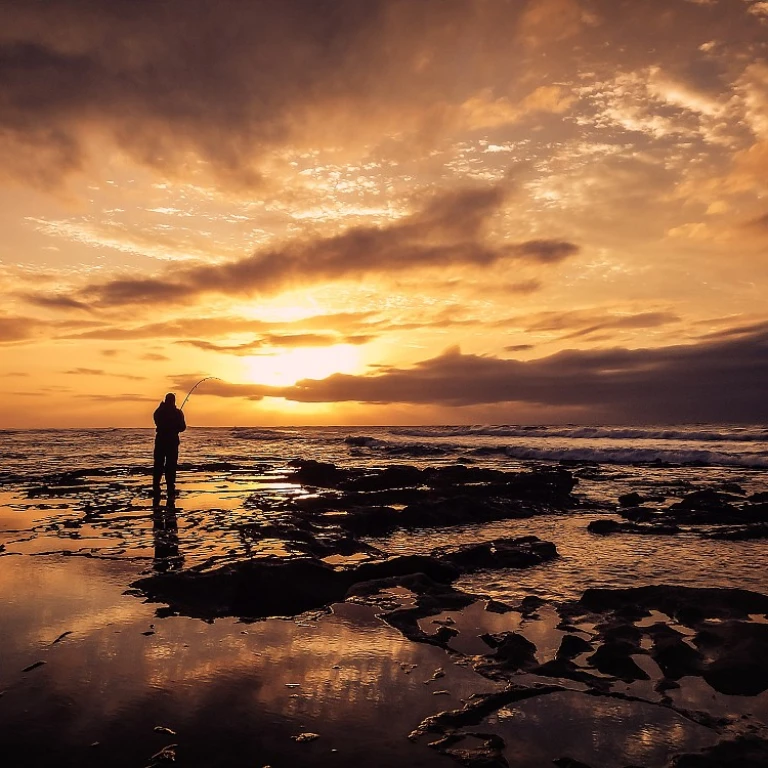
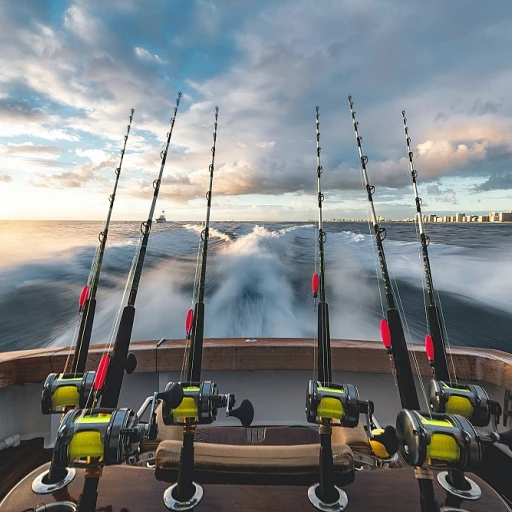

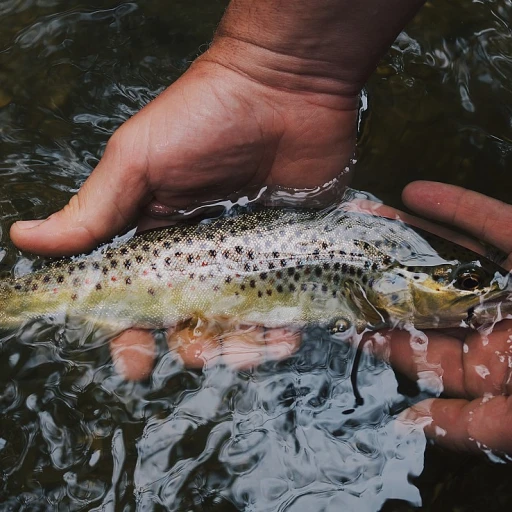
-large-teaser.webp)
